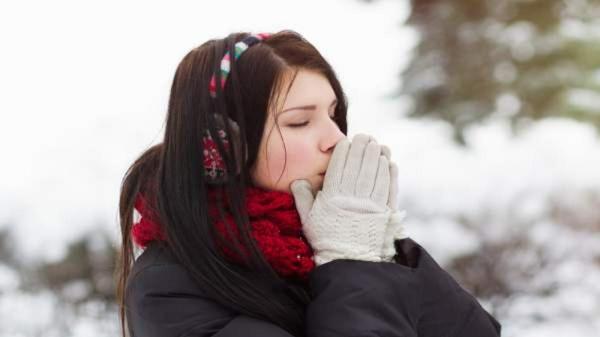By clothing-bag, 27/04/2022
How to deal with a person with hypothermia
mountain safety
Intense tremor, slurred speech and muscle incoordination are the first warning signs
A hypothermic woman survives a cardiac arrest of more than six hours, and without neurological damage
Josep CorbellaBarcelona
Accidental hypothermia occurs when the human body becomes cold and unable to maintain an adequate temperature, as Audrey Mash experienced on November 3 before she was rescued and survived cardiac arrest for more than six hours. Although most cases resolve without complications, it is a life-threatening disorder in which it is advisable to act quickly.
"We speak of hypothermia when the core body temperature is below 35 degrees, because from then on muscle and brain functions do not work properly," says Enric Subirats, director of the Chair of Mountain Medicine at the University of Girona. Between 35 and 36.5 degrees, you may feel intensely cold and start shivering, but it's still not an alarming situation.
What are the first warning symptoms?
The first obvious symptom of hypothermia is severe shaking that cannot be stopped voluntarily. It is a reaction of the body to counteract the cooling, since the tremor can multiply by up to five the production of heat by the muscles.
Other symptoms of grade 1 hypothermia, when the core body temperature is between 32 and 35 degrees, are due to worsening muscle coordination: the person has trouble walking in a straight line, stumbles frequently, moves slowly or not being able to zip up his coat. Cognitive functions are also affected and slurred speech, confusion and lethargy may be observed.
What symptoms indicate that a person is getting worse?

Upon reaching grade 2 hypothermia, between 28 and 32 degrees, the person stops shivering. This should not be misconstrued as an improvement, as the reason is that the muscles have depleted the glucose stores needed to contract. The risk of cardiac arrest increases as the temperature drops. Serious disturbances of consciousness appear, which can include apathy, confusion and delirium, and irrational behaviors, such as taking off clothes despite the cold. Coordination becomes very poor and the person instinctively adopts a fetal position to conserve heat.
As the body continues to cool down, it becomes semiconscious, its pupils dilate, and its heart becomes arrhythmias. In grade 3 hypothermia, between 24 and 28 degrees, the person is already unconscious, breathing and heart rate become erratic, and there is a high risk of death from cardiorespiratory failure. In grade 4 hypothermia, the one suffered by Audrey Mash, the person is in a state of apparent death, with no vital signs.
How to prevent hypothermia?
To avoid hypothermia in the mountains, it is recommended to plan the activity to be carried out well, checking the weather forecast before leaving and equipping yourself with the appropriate clothing for the conditions that are expected to be found.
Loss of body heat is not only aggravated by low temperatures, but also by wind and moisture on the skin. For this reason, the Manual of Mountain Medicine and the Natural Environment by Enric Subirats -a reference book on the subject- recommends clothing in layers. For the inner layer, we recommend a fabric that wicks sweat and moisture to the outside. For the outer layer, a fabric that is both waterproof and breathable. For the intermediate layers, fabrics that retain body heat but allow moisture to be evacuated.
It can also be useful to wear a hat, since approximately 25% of the heat is lost through the head, and gloves. It's a good idea to remove your clothes before beginning intense exercise to avoid sweating, and bundle up before you feel cold after an activity. Carrying a thermal survival blanket -they weigh just over 100 grams- can be useful in the face of the risk of suffering a mishap and having to stay longer than expected in the mountain.
How to treat a person with hypothermia?
An episode of hypothermia in the mountains can become a life-threatening situation and justifies a call to 112 to request a rescue. Treatment is based on preventing further heat loss and gradually rewarming the victim pending transfer to hospital. If possible, place the person in a warm environment off the ground and protected from the wind, such as a room or sleeping bag that has been pre-warmed by another person.
It is advisable to give him hot drinks and especially sugary ones, since sugar provides the necessary fuel so that the muscles can tremble and generate body heat. But they should not be tea or coffee since, being diuretics, they increase dehydration. Nor should they be alcoholic beverages since, by having a vasodilator effect, they increase heat loss through the skin.
Show commentsUp to the Minute
Related Articles